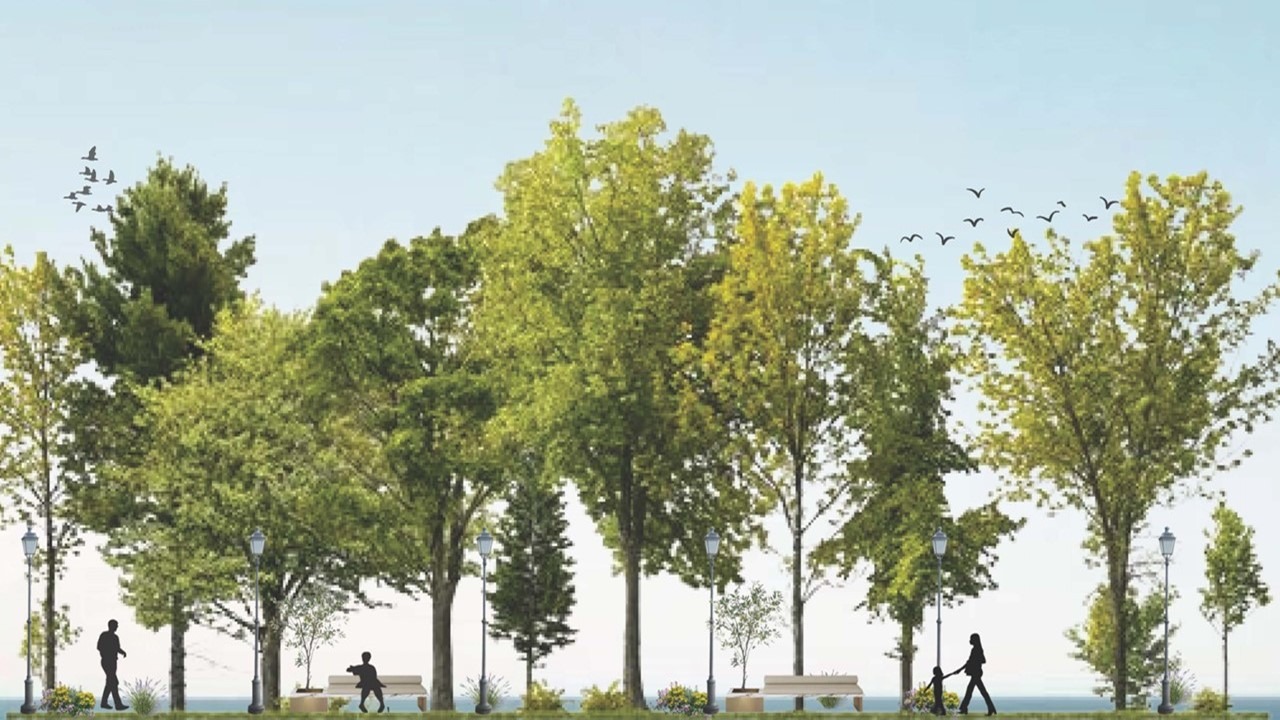
Architecture Faculty, Rangsit University
Asst.Prof.Kritaporn Lappimol, Piyawadee Nuchit, Kanyanat Sondok and Sukanya Amsing
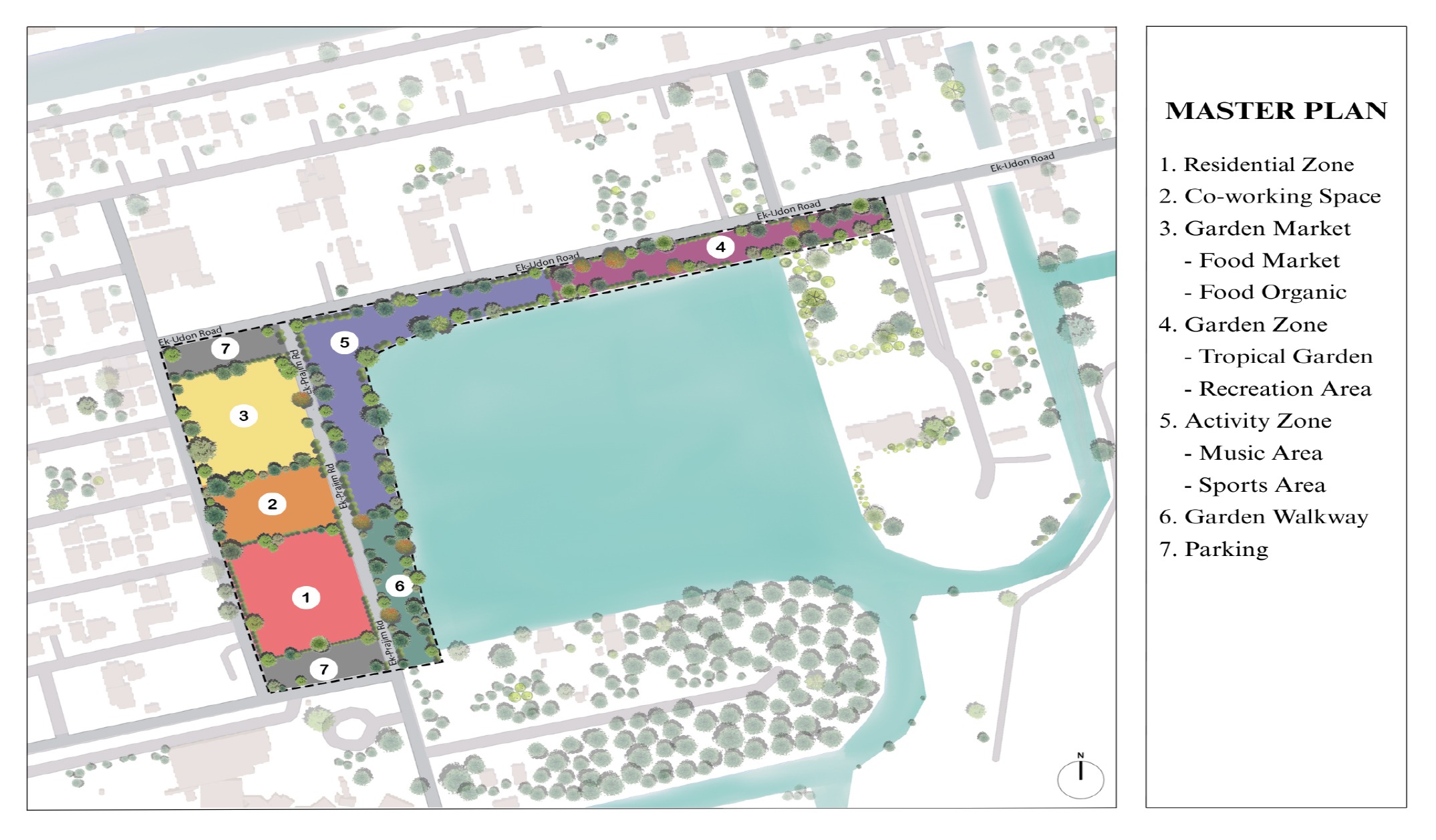
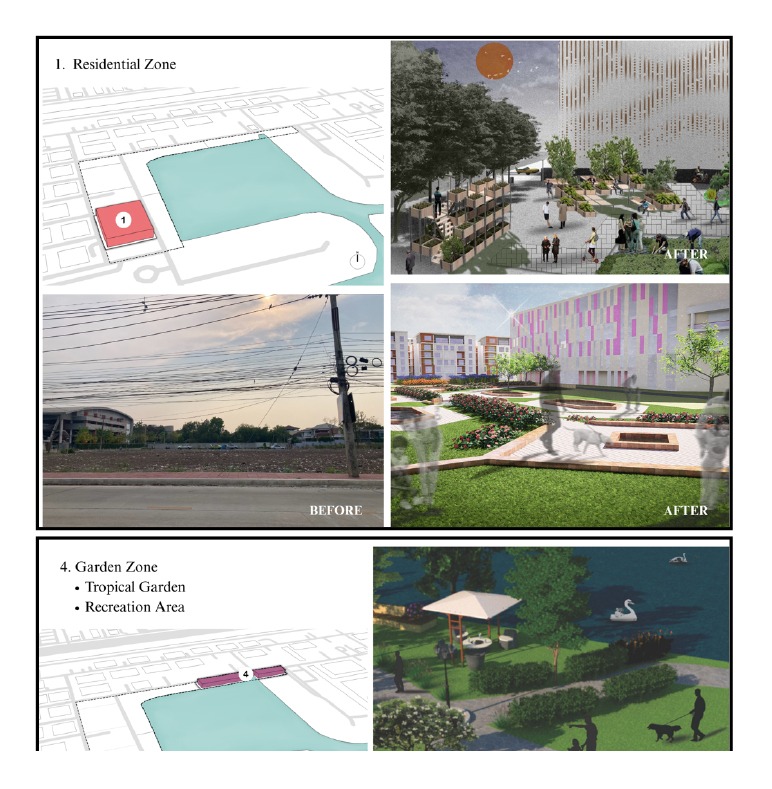
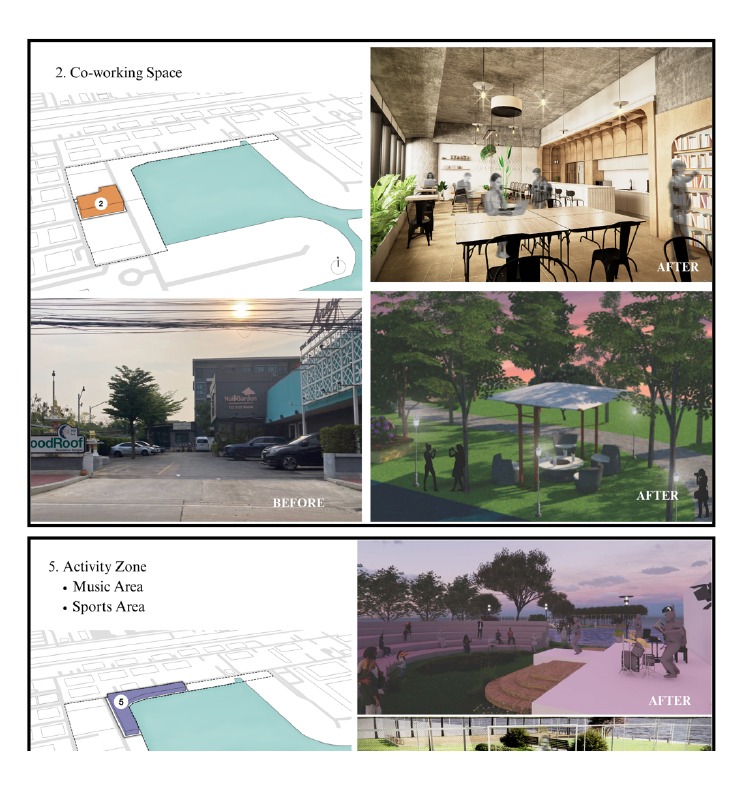

Abstract :
Muang Ake is a premier residential community located in Lak Hok, Pathum Thani Province, spanning approximately 4,000 rai and divided into nine phases. With extensive facilities, it has developed into a well-equipped urban community. However, many vacant and underutilized spaces remain due to a lack of comprehensive planning, resulting in a shortage of public areas for recreation and communal activities. This study, therefore, proposes a development approach for Muang Ake using the “New Urbanism” concept by transforming the vacant public space around the lake into a pedestrian-connected recreational space with integrated activities to enhance Muang Ake into a modern, livable, and sustainable urban community.
The study and design for the development of Muang Ake area: a case study of the vacant public space around the lake in Muang Ake Residential Community using the New Urbanism concept aims to (1) study and understand the principles and components of vacant public spaces; (2) analyze the site’s components and potential using Urban Planning and Urban Design principles; and (3) propose a development approach for the vacant public space around the lake based on the New Urbanism concept. This design study focuses on applying Urban Planning and Urban Design principles to enhance the physical environment to be more functional and suitable for recreation and activities. The New Urbanism concept was used as the main concept of the development approach and design to transform Muang Ake into a modern, people-friendly urban community. The area was designed with a mixed-use development approach, ensuring easy accessibility while promoting pedestrian and cycling infrastructure. It incorporates landscape and green spaces to support recreational activities. This development approach enhances underutilized spaces and creates a high-quality environment that fosters sustainable co-living and community well-being.
Objectives :
- To study and understand the concept and components of vacant public spaces;
- To analyze the site’s components and potential using Urban Planning and Urban Design principles; and
- To propose development strategies for the vacant public space around the lake in Muang Ake Residential Community based on the New Urbanism concept.
Conceptual Framework :
The development of Muang Ake area using the New Urbanism concept: a case study of the vacant public space around the lake in Muang Ake Residential Community, can be summarized into the following framework of study and design:
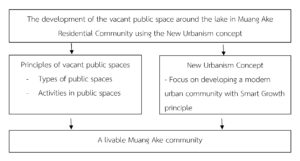
The development of the vacant public space around the lake in Muang Ake Residential Community incorporates the New Urbanism concept as the core principle. This concept focuses on designing livable spaces and environments. The development framework includes the following key principles: (1) Walkability: designing the area to be pedestrian-friendly; (2) Connectivity: interconnecting all areas through a network of roads and pedestrians as well as grouping buildings and public spaces to support daily activities within walking distance; (3) Mixed Use and Diversity: integrating various activities within the areas, blocks, and buildings as well as incorporating diversity of age, income, and culture within the community; (4) Mixed Housing: offering a variety of residential type options for residents in terms of both style and price; (5) Quality Architecture and Urban Design: emphasizing aesthetics, harmony with the environment, and comfort in usability as well as building proportions; (6) Traditional Neighborhood Concept: setting clearly visible center and boundaries of the community with walkable public spaces and art; (7) Increased Density: creating value and integrating land use by incorporating shops, residences, and services that are interconnected by walkways; (8) Smart Transportation: creating a network connecting neighborhoods, cities, and areas through public transport, pedestrian paths, and bicycle lanes; (9) Sustainability: reducing energy consumption and focusing on using locally produced goods as well as developing technologies that add value to the environment; and (10) Quality of Life: enhancing satisfaction and improving the quality of life.
Process / Methodology :
The development of the Muang Ake area using the New Urbanism concept: a case study of the vacant public space around the lake in Muang Ake Residential Community, followed the study and design process as follows:
(1) Study and Data Surveys
1.1 Physical area survey: examining the size and boundaries of the area, infrastructure, surrounding activities and context, access and routes, and problems and limitations;
1.2 Community context Analysis: surveying the population and user behavior, listening to community feedback regarding development, and analyzing the needs of space users, such as relaxation and participation in activities; and
1.3 Potential and limitation analysis.
(2) Conceptual Framework Development
2.1 Define the vision for area development using the New Urbanism concept, which includes promoting pedestrian access and area connectivity as well as creating a sustainable space that is suitable for diverse uses.
2.2 Define development goals, such as developing areas to accommodate community activities, increasing green spaces, improving the landscape, and considering safety and comfort to attract people to use the space collaboratively; and
2.3 Define design guidelines, such as designing the space to accommodate various activities, including relaxation zones, green spaces, outdoor activity zones, commercial activity zones, and other zones that support the area’s potential.
(3) Design and Development
3.1 The development plan is to cover the entire area, including pathways, bike lanes, and activity zones;
3.2 Detailed design includes pathways, activity spaces, green spaces, and various facilities; and
3.3 Presentation through 3D modeling to communicate the concept and development approach.
Techniques and Materials :
The development of the Muang Ake area using the New Urbanism concept: a case study of the vacant public space around the lake in Muang Ake Residential Community, aimed at developing the space to meet sustainable usage needs. The study area is located at the corner of Ake Prajim and Ake Udon roads, covering approximately 42,000 square meters. Currently, it is an undeveloped public space with the potential to support recreational and social activities. The surrounding areas include educational institutions, residential buildings, and shops. The goal of applying the New Urbanism concept is to create connections among people, promote a variety of activities, and support a sustainable environment. Therefore, the research team has defined the design approach by dividing the development area into three main zones: the residential zone, the commercial zone, and the recreational zone. Each zone is connected by convenient and safe pedestrian paths, with activities that are continuous and complementary to each other. This area will be developed into a new node and place, serving as the gathering point for people and various activities as well as for relaxation and promoting recreational activities. In addition, it will also support commercial development and promote environmental sustainability.
The result of this area development not only brings physical benefits but also has a clear impact on the economic and social dimensions. In terms of economics, once the area is developed, it will have the potential to attract people to use services and engage in commercial activities in the nearby areas, stimulating the local economy, creating opportunities to increase community income, and continuously increasing the value of properties in the area. On the social aspect, in addition to providing a space for relaxation and social interaction, it also promotes and supports learning and cultural activities for youth and students. Moreover, it transforms the previously vacant land into a safe public space, creating a conducive environment for living and effectively addressing social issues. The development of the vacant public space around the lake in Muang Ake Residential Community with the New Urbanism concept is thus a creative approach that enhances the quality of life in the Muang Ake community, making it a more livable as well as a smart-growth urban community in the future.
Result / Conclusion :
The development of the Muang Ake area using the New Urbanism concept: a case study of the vacant public space around the lake in Muang Ake Residential Community, aimed at developing the space to meet sustainable usage needs. The study area is located at the corner of Ake Prajim and Ake Udon roads, covering approximately 42,000 square meters. Currently, it is an undeveloped public space with the potential to support recreational and social activities. The surrounding areas include educational institutions, residential buildings, and shops. The goal of applying the New Urbanism concept is to create connections among people, promote a variety of activities, and support a sustainable environment. Therefore, the research team has defined the design approach by dividing the development area into three main zones: the residential zone, the commercial zone, and the recreational zone. Each zone is connected by convenient and safe pedestrian paths, with activities that are continuous and complementary to each other. This area will be developed into a new node and place, serving as the gathering point for people and various activities, as well as for relaxation and promoting recreational activities. In addition, it will also support commercial development and promote environmental sustainability.
The result of this area development not only brings physical benefits but also has a clear impact on the economic and social dimensions. In terms of economics, once the area is developed, it will have the potential to attract people to use services and engage in commercial activities in the nearby areas, stimulating the local economy, creating opportunities to increase community income, and continuously increasing the value of properties in the area. On the social aspect, in addition to providing a space for relaxation and social interaction, it also promotes and supports learning and cultural activities for youth and students. Moreover, it transforms the previously vacant land into a safe public space, creating a conducive environment for living and effectively addressing social issues. The development of the vacant public space around the lake in Muang Ake Residential Community with the New Urbanism concept is thus a creative approach that enhances the quality of life in the Muang Ake community, making it a more livable as well as a smart-growth urban community in the future.
References :
Charles Montgomery. (2014). Happy City: Transforming Our Lives through Urban Design. Farrar, Straus and Giroux (US).
Congress for the New Urbanism. (n.d.). What is new urban development?. https://www.cnu.org/resources/what-new-urbanism.
Jan Gehl. (2013). Life Between Buildings. [เมืองมีชีวิต]. (1st ed.). Li-Zenn Publishing Press.
Jan Gehl. (2016). Cities for People. [เมืองของผู้คน]. (1st ed.). Li-Zenn Publishing Press.
Matthew Carmona, Tim Heath, et al. (2021). Public Places, Urban Spaces: The Dimensions of Urban Design. (3rd ed.). Routledge Press.
Pawinee Lamtrakul. (2020). SUSTAINABLE URBAN PLANNING AND DEVELOPMENT. (1st ed.). Thammasat University Press.
Praifah Suwannason. (2023). DEVELOPMENT GUIDELINES FOR PRIVATELY OWNED PUBLIC SPACE OF MIXED-USE PROJECT IN BANGKOK. [Master’s thesis, Thammasat University]. https://digital.library.tu.ac.th/tu_dc/frontend/Info/item/dc:315139.
Pranom Tansukanun. (2019). The city of happiness: urban design & planning. (1st ed.). Chiang Mai University Press.
Trirat Jarutach. (2015). Universal Design Guidebook. (2nd ed.). Chulalongkorn University Press.